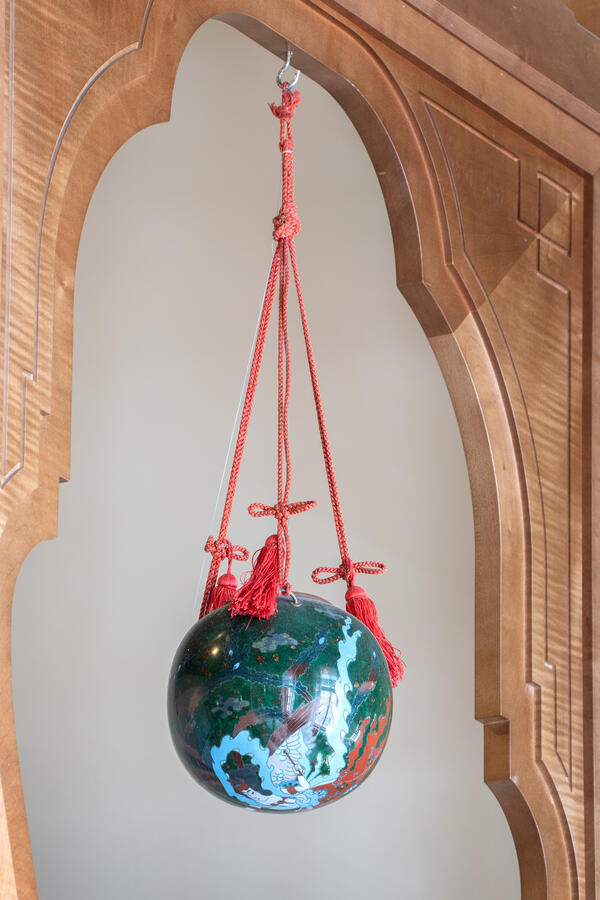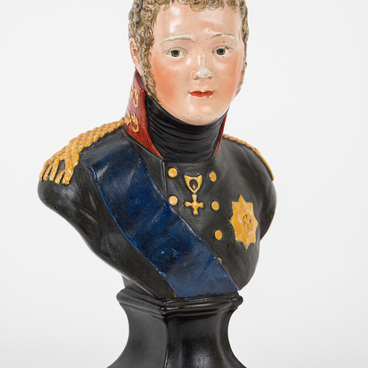At the turn of the 20th century, Russia and Europe experienced a surge of interest in the exotic arts of the East. The heir to the Russian throne, Grand Duke Nicholas Alexandrovich, the future Emperor Nicholas II, could not resist the vogue either. In 1890–1891, he undertook a diplomatic and educational trip on the battleship “Memory of Azov”. The trip included visits to Greece, Egypt, India, Ceylon, Singapore, Siam, China and Japan. During the trip the heir received various diplomatic gifts and also bought pieces he liked, and so he built up an extensive and very diverse collection of Oriental works of art and everyday items.
Among the emperor’s purchases were three Japanese ball-shaped incense burners — vessels for incense and aromatic mixtures. They appeared as early as the 3rd century B.C., and by the early 20th century were used in temples of all religions, palaces, and homes. The incense burners of the Alexander Palace are decorated with the image of a dragon among the clouds (the large one) and the Tennyo celestial maidens (the small ones). The pieces are made in the yusen-shippo cloisonné enamel technique with silver partitions and kyoto-shippo with gilded partitions, which involves covering the surface of the piece with a dense network of wire partitions where cells are filled with polychrome enamel.
In the winter of 1893–1894, the entire collection assembled by the emperor was presented to the public at a charity exhibition in the Rafael Loggias of the Imperial Hermitage and in the Field Marshall Room of the Winter Palace. The section devoted to Japan exhibited three spherical incense burners that now adorn Nicholas II’s Moorish Room or Tsar’s Bathroom at the Alexander Palace.
In 1897, by order of Nicholas II, the ethnographic part of the collection was transferred to the Peter the Great Museum of Anthropology and Ethnography, while the other items remained in the imperial palaces (the Winter Palace and the Alexander Palace). In the 1930s some of the items from the former imperial residences were transferred to the State Hermitage and the Ethnographic Department of the Russian Museum. However, these particular incense burners remained in the Alexander Palace and were included in the museum’s pre-war exhibition. In 1941, they were evacuated along with the other most valuable exhibits of the palace and now occupy their original place.
Among the emperor’s purchases were three Japanese ball-shaped incense burners — vessels for incense and aromatic mixtures. They appeared as early as the 3rd century B.C., and by the early 20th century were used in temples of all religions, palaces, and homes. The incense burners of the Alexander Palace are decorated with the image of a dragon among the clouds (the large one) and the Tennyo celestial maidens (the small ones). The pieces are made in the yusen-shippo cloisonné enamel technique with silver partitions and kyoto-shippo with gilded partitions, which involves covering the surface of the piece with a dense network of wire partitions where cells are filled with polychrome enamel.
In the winter of 1893–1894, the entire collection assembled by the emperor was presented to the public at a charity exhibition in the Rafael Loggias of the Imperial Hermitage and in the Field Marshall Room of the Winter Palace. The section devoted to Japan exhibited three spherical incense burners that now adorn Nicholas II’s Moorish Room or Tsar’s Bathroom at the Alexander Palace.
In 1897, by order of Nicholas II, the ethnographic part of the collection was transferred to the Peter the Great Museum of Anthropology and Ethnography, while the other items remained in the imperial palaces (the Winter Palace and the Alexander Palace). In the 1930s some of the items from the former imperial residences were transferred to the State Hermitage and the Ethnographic Department of the Russian Museum. However, these particular incense burners remained in the Alexander Palace and were included in the museum’s pre-war exhibition. In 1941, they were evacuated along with the other most valuable exhibits of the palace and now occupy their original place.





